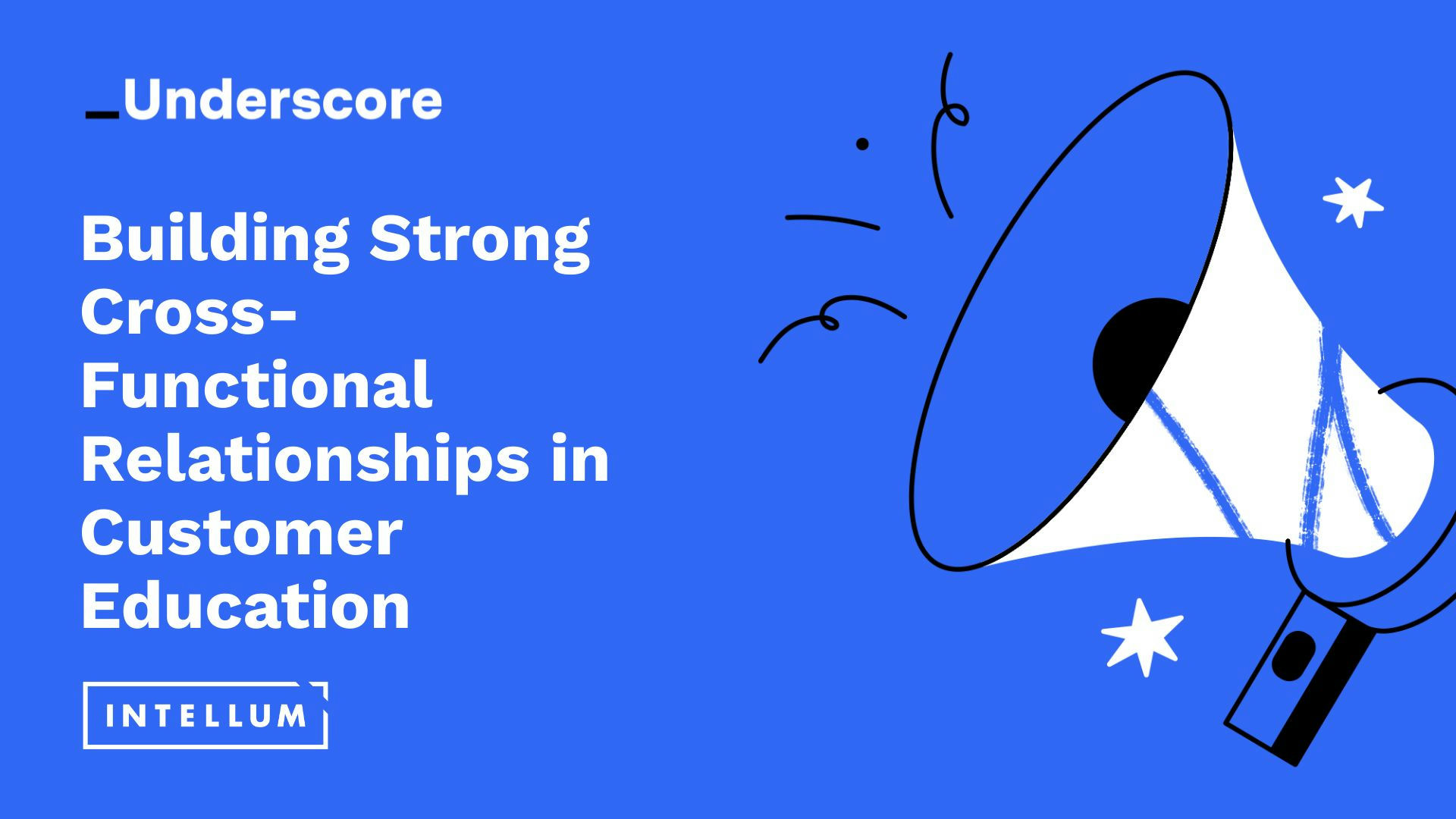If you're a customer education leader, L&D manager, or enablement owner wondering how to get internal buy-in for your training initiatives, this guide is for you. This article answers questions like:
- “How do I convince other teams that education matters?”
- “How do I get cross-functional support to promote our training content?”
- “What’s the best way to position education so that other teams want to share it?”
Why Internal Buy-In Is Critical for Education Programs
You’ve built courses, certifications, or a full academy. But to drive real impact, people inside your organization need to understand why it matters—and share it with their audiences.
Key reasons to invest in internal alignment:
- Drives awareness and usage of your content
- Strengthens adoption and onboarding outcomes
- Demonstrates education’s impact on business metrics like retention and revenue
According to Intellum’s 2025 Education-Led Growth Report, companies that align education with broader go-to-market strategies see higher engagement, revenue contributions, and retention outcomes.
Step-by-Step: How to Position Education Internally (and Get Teams to Share It)
Here’s how to make your education program relevant, valuable, and easy for internal teams to understand, support, and promote.
1. Reframe learning as a business growth driver.
Instead of promoting education as a service or compliance checkbox, frame it as a strategic growth initiative. Align your messaging with business goals:
Business Goal: Revenue Growth
Education Impact: Accelerates product adoption
Business Goal: Customer Retention
Education Impact: Reduces churn through deeper product usage
Business Goal: Performance
Education Impact: Onboards employees and partners faster
Business Goal: Cost Reduction
Education Impact: Lowers support ticket volume
Pro tip: Use language that resonates with business leaders—phrases like “reducing time to value,” “improving onboarding efficiency,” or “decreasing support volume.”
2. Make the business case clear.
Before asking for support, make sure you can clearly answer:
- What business problem does our education solve?
- How does this content support team or company objectives?
- What results have we seen?
For example:
Our new certification pathway has reduced support tickets by 18% among enrolled customers in Q2.
Or:
We’re helping new partners onboard 30% faster, reducing time-to-value for channel revenue.
Need help? Watch our webinar on how to prove your education program works.
3. Build a ready-to-use internal enablement kit.
Make it easy for internal teams—like Sales, Support, Customer Success, Product, and Marketing—to promote learning content.
Include:
- Short blurbs or email templates
- Key value props for learners
- Links to courses or certifications
- FAQs or talking points
- Slack messages, slides, or announcement posts
This makes it plug-and-play for team leads or managers to share learning content in newsletters, customer calls, or onboarding flows.
4. Tap into strategic moments.
Promote education like a product. Use key moments to re-engage teams:
- Academy Launch or Relaunch – Announce in all-hands, team meetings, or internal channels
- New Certifications – Celebrate completions publicly to build momentum
- Product Updates – Share training that supports new features
Bonus Tip: Create recurring cadences like “Learning Digest Fridays” or monthly “Top 3 Courses” emails.
5. Use real-world proof to build belief.
Social proof sells internally. Share results and human stories:
- Our onboarding path reduced ramp time for new reps by 22%
- Here’s what a CSM said after sharing the certification: “This is a game-changer for our onboarding.”
- Support volume dropped 15% for certified users
Internal metrics to share:
- Course completion rates
- Certification adoption
- NPS or satisfaction scores
- Support or onboarding data
6. Tailor the message by team.
Speak their language:
- Sales: “This helps you close faster and build customer trust.”
- Support: “Training reduces inbound tickets by answering common questions early.”
- Marketing: “Certifications increase brand visibility and user engagement.”
- Customer Success: “Education helps your accounts adopt faster and renew longer.”
Want to turn your education program into a company-wide growth engine? Start by getting buy-in from the inside out. When teams understand and share your content, learners engage, and business results follow.
Need a Learning Technology Partner? Turn to Intellum
The Intellum Platform is built to help education teams scale internal and external learning. With capabilities like:
- Personalized learning paths by audience
- Branded, intuitive UI to drive engagement
- Real-time data insights on training impact
- Internal marketing support resources
Customers like Google, Meta, and DISCO use Intellum to deliver measurable outcomes, like faster onboarding, higher certification rates, and reduced support volume.
We’d love to help you do the same.
TL;DR: How to Get Internal Support for Education
- Reframe learning as a revenue and retention lever
- Show how education solves a real business problem
- Equip internal teams with copy, links, and proof
- Promote learning during key product and business milestones
- Share data and stories to build internal credibility
- Speak each team’s language—and connect the dots for them




.png)

